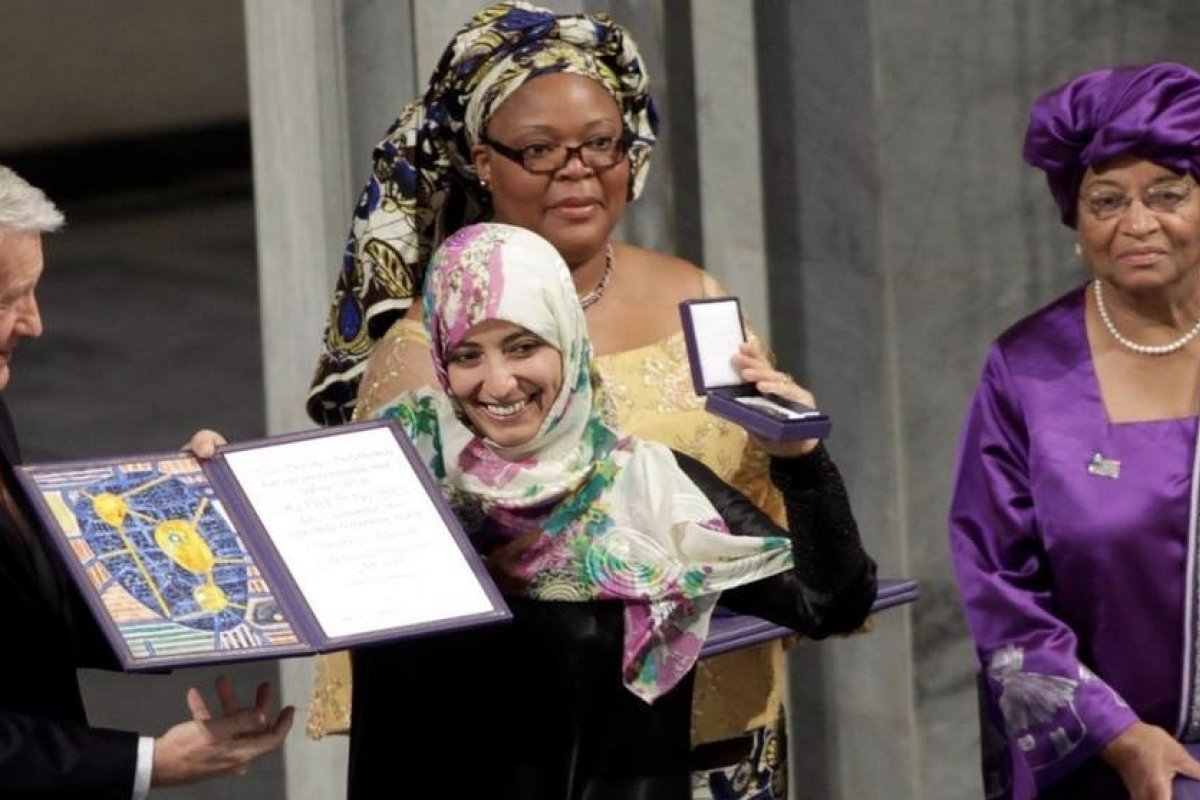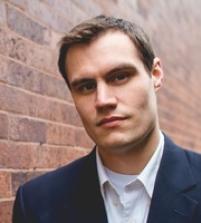
How to Win a Nobel Peace Prize
Who wins the Nobel Peace Prize? And what does it teach us about the last century?
The Nobel Peace Prize, which will be awarded for the hundredth time next month, is the most famous and prestigious prize in the world. Having the Peace Prize makes a great addition to any resume, CV, or Tinder profile. So how would you go about winning one?
A close look at the history of the award offers us some helpful tips for taking home the prize and also serves to give a history of peacemaking since 1901. Just as we can look at the last century or so from the perspective of military history or economic history, so we can study this century from the perspective of peace, aiming to understand the development of the concept of peace and the means used to attain it. The Nobel Peace Prize offers one way of telling that story.
When Alfred Nobel composed his will in 1895, he included a provision for a prize for “the person who has done the most or best to advance fellowship among nations, the abolition or reduction of standing armies, and the establishment and promotion of peace congresses.” Nobel’s will offers a glimpse into how most people thought about peacemaking at the turn of the century. The conflicts that were in focus were waged between nation-states with sizeable militaries, and work for peace was done primarily through the signing of treaties and conventions by diplomats shaking hands in elegant wood-paneled rooms.
Several of the early Nobel Peace Prizes went to political leaders who were instrumental in brokering peace agreements between nations. This, I suppose, is the first tip if you’re trying to win Nobel Peace Prize: negotiate the end of an ongoing conflict. You don’t even have to be a particularly peaceful person to do this; Teddy Roosevelt—the president most likely to challenge a moose to a duel—won in 1906, alongside a few other people who don’t seem like they belong on the same list as Mother Teresa. The Nobel Committee continues to honor leaders who use diplomacy to bring greater stability and cooperation between feuding nations; this year’s winner Abiy Ahmed is an example.
Increasingly after WWII, however, the Committee honored people addressing the social, political, and environmental factors that make for human flourishing, not just nonviolent conflict resolution between nations. In the words of former committee chairman Francis Sejersted, “Humanitarian work prevents war by seeking to eliminate the causes of violence and war” (p.277). Especially in the middle of the century, we see the conception of peacemaking changing from the diplomatic vision to a more holistic one. This approach is focused less on political leaders and negotiations, and more on the hearts, minds, and stomachs of ordinary people who might otherwise turn to collective violence as a means of meeting their needs or punishing scapegoats.
In addition to addressing the catalyzing factors for violence, humanitarian groups invite nations with differing agendas to cooperate to address human needs. These causes summon us to look beyond our partisan disputes, see one another simply as fellow humans (rather than citizens of competing nation-states), and work together to provide for basic human needs. People working for causes that transcend national interests—like efforts to fight world hunger or climate change—have been honored in every decade since the Peace Prize began. The Red Cross, for example, won three times, the argument being that caring for soldiers and prisoners of war on all sides of a conflict contributes to a sense of “brotherhood” and common humanity even in the most inhuman of circumstances. Committee chair Gunnar Jahn said of the Quaker service committees, for instance, that they demonstrated “that rich expression of the sympathy between all men, regardless of nationality or race, which, transformed into deeds, must form the basis for lasting peace” (p.145).
This leads us to a second tip: join an organization or start your own. Even when the Nobel Peace Prize goes to an individual, it is almost always recognizing the work of a group. Behind every laureate is an organization—the SCLC and SNCC for King, the Green Belt Movement for Wangari Maathai, Hull House for Jane Addams. There are a few arguable exceptions (Malala Yousafzai? Elie Wiesel?), but they only prove the rule. Baseball is an individual sport masquerading as a team sport; peacemaking is a team sport disguised as an individual sport.
As the twentieth century continued, the Nobel Committee increasingly recognized peace leaders in the Gandhian paradigm, beginning with Albert Lutuli and Martin Luther King Jr. in the 1960s. What’s characteristic of this third stage in the development of peacemaking is the use of nonviolent direct action to achieve social change within a nation. It can best be summarized by A.J. Muste’s famous saying, “There is no way to peace. Peace is the way.” For these laurates, peace is a verb, a way of mobilizing personal integrity, the refusal to play into the oppressor’s hands through violence, and the willingness of many people to do small actions for the sake of justice. These leaders demonstrate that one can achieve political aims, sometimes dramatic and revolutionary aims, without resorting to violence.
Though leaders of this sort don’t have to be religiously affiliated, it’s interesting how many of them have drawn on diverse religious traditions to justify and articulate their nonviolent campaigns: Gandhi drawing primarily from Hindu and Jain traditions, Adolfo Perez Esquivel and Desmond Tutu from Christianity, and the Dalai Lama and Aung San Suu Kyi from Buddhism. These leaders are all practical, political tacticians of the highest order, but they also carry with them a spiritual aura, in part at least because they show us what ordinary people are capable of and instill in us the belief that human lives aren’t totally determined by military and economic forces.
A third tip for aspiring Peace Prize winners: hit the books. One fascinating development in the last thirty years or so is Peace Prize laureates who have rigorously studied the methods of previous peace leaders. Gandhi saw himself as a sort of scientist doing experiments with nonviolence. Leaders after Gandhi, such as Albert Lutuli and Martin Luther King Jr., took up the project of developing the science of nonviolent direct action, and more recent peace leaders have studied their methods, learning from their successes and failures. Leymah Gbowee received an MA in Conflict Transformation from Eastern Mennonite University, and the most recent winner, Abiy Ahmed, received a PhD at the Institute for Peace and Security Studies in Addis Ababa.
Fourth, and finally, stand for something. The Nobel Peace Prize recognizes and shines a spotlight on individuals who, through personal integrity and fearless testimony, have come to symbolize struggles for peace, justice, and human rights. This has been the case as far back as 1935’s award to Carl von Ossietzky, imprisoned for blowing the whistle on illegal Nazi re-armament, and we see that same passionate conviction in Sakharov, Mandela, and Shirin Ebadi. Steady commitment to a just cause even in the face of efforts to silence you, and in spite of social hierarchies that suppress your voice—that’s what really moves history when we look at it from the perspective of peace.
Suggested Reading
Irwin Abrams, The Nobel Peace Prize and the Laureates. Nantucket, MA: Science History Publications, 2001.
Øvind Stenerson, Ivar Libaek, and Asle Sveen, The Nobel Peace Prize: One Hundred Years for Peace. Oslo: Cappelen, 2001.
Judith Hicks Stiehm, Champions for Peace: Women Winners of the Nobel Peace Prize. Lanham, MD: Rowman & Littlefield, 2018.
Image: Nobel Peace Prize winners Tawakkul Karman of Yemen, center, Liberian peace activist Leymah Gbowee, behind, and Liberian President Ellen Johnson Sirleaf, right, receive their medals and diplomas from Nobel committee chairman Thorbjoern Jagland, left, at City Hall in Oslo, Norway, in December 2011. (Photo: John McConnico | AP)
Sightings is edited by Joel Brown, a PhD Candidate in Religions in the Americas at the Divinity School. Sign up here to receive Sightings via email. You can also follow us on Facebook and Twitter. The views and opinions expressed in this article are those of the author and do not necessarily reflect the position of the Marty Center or its editor.


